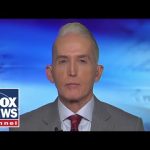In a shocking and tragic turn of events, a peaceful worship service at the Church of Jesus Christ of Latter-day Saints turned into a scene of chaos and fear. Over the weekend, while hundreds of faithful gathered to practice their religion, a gunman violently attacked, ramming his car into the church’s entrance before exiting the vehicle and opening fire. The horror didn’t stop there; he even set the building ablaze, resulting in a total loss of the church that held so many memories for its congregants. As authorities continue to respond, the community is left with lingering fears and many questions.
The local Michigan community is reeling as details of the incident unfold. Authorities are frantically working to uncover more information, including searching for any unaccounted individuals in the aftermath of this devastating attack. It’s heart-wrenching to think that a place meant for solace and connection could be transformed by such senseless violence. Onlookers and first responders showed incredible bravery, taking immediate steps to shield children and help congregants escape the chaos. Their courage in the face of danger serves as a silver lining amidst this senseless tragedy.
The suspect, identified as Thomas Jacob Sanford from nearby Burton, Michigan, is now the focus of an FBI investigation. It has been deemed an act of targeted violence, with investigators exploring motives that could link it to hate crimes or domestic terrorism. This classification raises an unsettling alarm, suggesting that this incident might stem from deeper societal issues. The FBI is methodically analyzing Sanford’s background, including writings and social media interactions, to determine what fueled such an appalling act.
Experts have begun discussing the impact of mental health, particularly regarding veterans like Sanford, who served in the Marine Corps. Stories about mental health struggles among returning service members are not new, with many facing invisible battles long after they leave the battlefield. There is growing concern that without proper support and awareness, individuals like Sanford could fall through the cracks and pose threats to their communities. It’s a stark reminder that the issues of mental health and domestic terrorism often intertwine, reflecting the challenges society faces in addressing these urgent matters.
As the country grapples with this tragedy, a broader debate emerges regarding the security of places of worship. Just like schools and public spaces, churches are vulnerable to attacks, making many wonder if it’s time to bolster security measures. Many experts recommend an increased presence of trained security personnel and upgraded systems to help protect these sacred spaces. It’s disheartening that individuals looking to connect with their faith might need to do so under the watchful eyes of armed guards, but in today’s world, safety has become a critical consideration.
As people come together to mourn and discuss the implications of this tragic event, one thing remains clear: the desire for peace and safety in places of worship must transcend fear. The community will rally, offering support to those affected, while also demanding that deeper issues be addressed, from mental health resources to security policies. The hope is that through unity and proactive measures, tragedies like this can be prevented in the future, allowing everyone to worship freely and safely.




